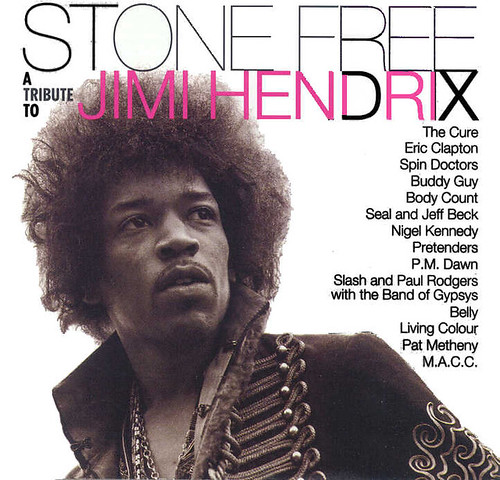
The worlds of music, film, and art have witnessed the rise of extraordinary talents whose careers reached remarkable heights, only to be tragically cut short. Behind the brilliance and acclaim often lies a more somber reality marked by personal struggles and the burden of addiction. These are stories that continue to resonate, reminding us of the fragile line between fame and suffering.
One of the most emblematic examples of this phenomenon is the so-called “27 Club.” While the idea that the age of 27 holds particular danger for artists may sound like folklore, the list of creative individuals who died at this age—often linked to substance abuse or other tragic circumstances—is both extensive and profoundly sorrowful. Their stories underscore the immense pressure faced by public figures, particularly those in the spotlight from a young age.
In remembering these artists, we aim to reflect on their creative legacy while acknowledging the conditions surrounding their untimely deaths. These narratives form a poignant part of cultural history, highlighting the destructive force of addiction and the lives it continues to claim. The individuals remembered here left an indelible mark on the world. Their work endures, even as their lives were cut short by battles that too often remain hidden behind the curtain of fame.

1. **Robert Johnson**: Robert Johnson’s influence on modern music is both profound and far-reaching, shaping the very foundation of blues and rock and roll. Born in Mississippi in either 1911 or 1912, according to varying historical records, Johnson was a Delta blues musician of extraordinary skill whose brief life left an enduring cultural legacy.
Although he inspired generations of musicians—from blues figures like Muddy Waters to rock bands such as the Rolling Stones—his success during his lifetime was minimal. His only notable release was “Terraplane Blues,” a minor hit that did not reflect the depth of his artistry. Johnson’s distinctive falsetto voice, coupled with his innovative slide guitar technique, remained largely unknown to broader audiences until a compilation of his recordings was released posthumously in 1961.
His life remains shrouded in myth, most famously the tale that he sold his soul to the Devil at a crossroads in exchange for musical genius and a limited number of years to use it. That legend gained symbolic weight when Johnson died under mysterious circumstances in 1938, reportedly after drinking poisoned whiskey at a juke joint. He was just 27 years old.
Despite his short life and limited recordings, Johnson composed several works that became blues standards, including “Me and the Devil Blues,” “Sweet Home Chicago,” and “Love in Vain.” His influence echoes through decades of music history, reinforcing his status as a seminal figure whose myth and music continue to captivate and inspire.

2. **Brian Jones**: As a founding member of The Rolling Stones, Brian Jones played a pivotal role in shaping the band’s early musical identity and visual aesthetic. Emerging from London’s bohemian scene in the early 1960s, the group originally consisted of Mick Jagger, Keith Richards, Charlie Watts, Bill Wyman, and Jones, united by a deep appreciation for Chicago blues.
Born in 1942, Jones was an exceptionally versatile musician. While best known for his rhythm and slide guitar work, he also played a wide array of instruments, including piano, saxophone, flute, marimba, Mellotron, sitar, harpsichord, and harmonica. His eclectic contributions added distinctive textures to the band’s evolving sound and set them apart from their contemporaries.
Despite his creative input, Jones often drew attention for his erratic behavior, drug use, and what was described in the context as “all-purpose degeneracy.” His increasing instability and perceived self-centeredness strained relationships within the group, contributing to his eventual dismissal from the band in June 1969.
Only weeks after his departure, Jones was found dead in his swimming pool. Reports indicated that he drowned after consuming alcohol and drugs, though speculation persists about possible foul play. Keith Richards once remarked, “I don’t know what happened, but there was some nasty business going on.” His death at the age of 27 not only added a tragic chapter to the band’s history but also positioned Jones as an emblematic figure of talent lost too soon.

3. **Jimi Hendrix**: Jimi Hendrix remains one of the most revered and influential guitarists in music history. Often described as a “guitar god,” he helped define the sound of the 1960s and reshaped the possibilities of rock music. Born in Seattle in 1942, Hendrix’s path to fame was unconventional. He served briefly as a paratrooper in the U.S. Army before working as a sideman for artists such as Little Richard and The Isley Brothers.
His breakthrough came in 1966, when he was discovered performing in a New York City club. Soon after, he traveled to England, where his electrifying stage presence and unparalleled instrumental skill quickly earned acclaim. Hendrix stunned audiences and fellow musicians alike, including Eric Clapton, with his dynamic performances. By the late 1960s, he had become an international sensation, renowned for his groundbreaking guitar technique and bold experimentation.
Despite his success, Hendrix struggled behind the scenes. He faced ongoing financial disputes with his record label and grew increasingly frustrated by the public’s expectations that he continue replicating the style that had brought him fame. These creative and professional tensions remained unresolved at the time of his death.
On September 18, 1970, Hendrix died from an overdose of barbiturates. His death marked the loss of an extraordinary talent and underscored the intense pressures that often accompany global stardom.

4. **Janis Joplin**: With her raw, raspy vocals and emotionally uninhibited delivery, Janis Joplin emerged as the leading white female blues vocalist of the 1960s, leaving a lasting imprint on the history of rock music. Born in Texas in 1943, Joplin endured alienation from a young age, often feeling like an outsider. She found refuge in the sounds of blues legends such as Bessie Smith, whose emotional depth and power influenced her own vocal style.
Joplin began performing folk and blues as a teenager, frequently moving between her home state and the growing countercultural hub of San Francisco. In 1966, she joined Big Brother and the Holding Company, a local band that would soon make national headlines. Their electrifying performance at the 1967 Monterey Pop Festival introduced her to a wider audience and marked the start of her meteoric rise.
By 1970, her life appeared to be taking a more stable turn. She was engaged to be married and had begun recording a new album with the Full Tilt Boogie Band. Despite these hopeful developments, Joplin continued to struggle with substance abuse, a battle that remained unresolved. During the recording process, she died of a heroin overdose.
The resulting album, Pearl, was released posthumously and became a commercial and critical success. The single “Me and Bobby McGee,” featuring the haunting lyric “Freedom’s just another word for nothing left to lose,” reached number one on the Billboard Hot 100. The album’s success cemented Joplin’s legacy, even in death. Her passing represented a profound loss, silencing one of the most distinctive and powerful voices in American music.

5. **Ron (“Pigpen”) McKernan**: Ron “Pigpen” McKernan was a founding member of the Grateful Dead and an integral part of the band’s formative years. In 1964, he joined with Jerry Garcia and Bob Weir to form Mother McCree’s Uptown Jug Champions in Palo Alto, California. This group laid the foundation for what would soon become one of rock’s most unconventional and enduring acts. By the end of 1965, the addition of Phil Lesh on bass and Bill Kreutzmann on drums completed the transformation into the Grateful Dead.
Born in 1945, McKernan stood out not only for his signature biker-hippie image but also for his deep affinity for blues and rhythm and blues. As the band’s primary keyboardist and a key vocalist, his gritty, soulful voice gave emotional weight to songs such as “Death Don’t Have No Mercy” and “Bring Me My Shotgun.” His musical sensibility rooted the band’s sound in blues tradition, offering a raw counterbalance to the more psychedelic leanings of his bandmates.
However, McKernan’s personal life was marked by an early and intense struggle with alcohol. Reports suggest he began drinking as young as age 12, a habit that would eventually lead to serious health issues. His declining condition, caused by liver damage and cirrhosis, forced him to withdraw from touring in 1972. In 1973, at the age of 27, Ron McKernan died of liver disease.
His death was a significant blow to the Grateful Dead and their community of fans. More than just a performer, McKernan embodied the soul of the group in its earliest years. His story stands as a powerful reminder of the destructive impact of substance abuse, even amid extraordinary creative achievement.

6. **Kurt Cobain**: Before becoming the iconic frontman of Nirvana and a defining voice of Generation X, Kurt Cobain spent his early years in the Pacific Northwest, shaped in part by the emotional aftermath of his parents’ divorce when he was nine. This experience left a lasting impact, leading him to seek emotional refuge in music and express himself through minor acts of rebellion.
Cobain’s artistic path began to take shape in 1987 when he formed Nirvana with bassist Krist Novoselic. The group initially struggled to maintain a stable lineup until drummer Dave Grohl joined in 1990, completing the trio that would soon reshape modern rock. Their debut album, Bleach, released in 1989, generated interest in underground circles, but it was the release of Nevermind in 1991 that brought them mainstream recognition. The album’s lead single, “Smells Like Teen Spirit,” became a cultural phenomenon, propelling Cobain into the spotlight as an unexpected spokesperson for a disaffected generation. Though praised for his evocative lyrics and raw vocal intensity, Cobain was never comfortable with the attention and resisted the label of generational figurehead.
Despite the band’s meteoric rise and his widespread influence, Cobain wrestled with personal demons. He suffered from chronic physical pain and depression, and his attempts to manage these conditions led to heroin use. These struggles became more visible as the pressures of fame intensified. In March 1994, Cobain survived a nonfatal suicide attempt while in Rome. Just one month later, in April 1994, he died by suicide at his home in Seattle.
Cobain’s death at the age of 27 was a devastating loss for the music world and for a generation that had seen him as both an inspiration and a mirror to their own struggles. His story remains one of the most haunting examples of the complex intersection between creativity, mental health, and the burdens of public life.

7. **Amy Winehouse**: Amy Winehouse captivated audiences with a voice that was both intensely soulful and unmistakably distinctive. She rose to international prominence following the release of her critically acclaimed, Grammy Award-winning album Back to Black in 2006. Born in London in 1983, Winehouse experienced the emotional strain of her parents’ divorce during childhood, a formative event that contributed to her rebellious nature and infused her artistry with emotional depth.
Her passion for music developed early, particularly through a deep admiration for jazz legends such as Billie Holiday and Dinah Washington. By the age of 16, she was already performing in jazz clubs across London. Her debut album, Frank, released in 2003, highlighted her sharp lyrical wit and vocal prowess. However, it was Back to Black that marked her creative peak, anchored by the breakout single “Rehab.” The song’s frank reflection on her personal struggles resonated with listeners around the world and cemented her place as one of the most compelling artists of her generation.
As her fame escalated, so did public scrutiny of her increasingly troubled personal life. Winehouse’s music often mirrored her reality, particularly her turbulent relationship with her husband, Blake Fielder-Civil, and her highly publicized battles with substance abuse. Her erratic behavior and health concerns began to impact her professional commitments. In June 2011, a planned comeback tour was abruptly canceled following a widely criticized performance in which she appeared visibly intoxicated on stage.
Just one month later, in July 2011, Amy Winehouse died of alcohol poisoning at the age of 27. Her untimely passing marked a profound loss for the music world, silencing a voice that had conveyed pain, vulnerability, and brilliance with rare authenticity. Her story endures as a powerful reminder of the emotional toll that often shadows extraordinary talent.

These stories, though deeply tragic, underscore the immense pressures faced by those in the public eye and highlight the devastating consequences of addiction and related health issues, irrespective of fame or talent. Honoring these artists allows us to recognize their lasting contributions to culture while also confronting the very real human struggles that prematurely ended their lives. Their legacies endure through their art, a lasting testament to both their extraordinary abilities and the potential that was lost.



